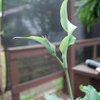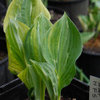HVX and Glyphosphate
roblksd
11 years ago
More Discussions
This is another subject that came up in Les's post on Garden center recycling of soil and composting. I was wondering if a couple people would volunteer to do an experiment and kill few hosta that are growing in the ground and see how long it takes for the roots and crown to decay to a point that they are gone. I think you would have to have at least 4 plants growing in similar soil and lighting conditions and dig them up after set periods of time and sift the the soil. Probably at 1 yr, 18 months, 2 years etc. Hvx is a potexvirus that is in a familiy that effects many different plants. There are other strains of Potexvirus that effect hosta also. Jon, I believe you wrote in a post that you have not had an HVX plant. If I am incorrect on this please say so.This is NOT an attack ! I am curious why you recommend this method when you have not tried it. I also would like help in determining a definition of what is considered dead. If HVX needs a living host then at what point is tissue no longer considered alive. Rob


coll_123
paul_in_mn
Related Professionals
Norfolk Landscape Architects & Landscape Designers · Taylorsville Landscape Architects & Landscape Designers · Forest City Landscape Architects & Landscape Designers · Paradise Landscape Architects & Landscape Designers · Elgin Landscape Contractors · Seminole Landscape Contractors · Tewksbury Landscape Contractors · Irvington Landscape Contractors · Park Ridge Driveway Installation & Maintenance · Mesa Fence Contractors · Channahon Fence Contractors · Naperville Fence Contractors · Emeryville Solar Energy Systems · Frankfort Solar Energy Systems · Pinellas Park Solar Energy Systemspaul_in_mn
in ny zone5
anniegolden
in ny zone5
Steve Massachusetts
paul_in_mn
in ny zone5
coll_123
User
donrawson
Jon 6a SE MA
buckeye15
Jon 6a SE MA
ken_adrian Adrian MI cold Z5
Jon 6a SE MA
coll_123
Jon 6a SE MA
roblksdOriginal Author
Steve Massachusetts
roblksdOriginal Author